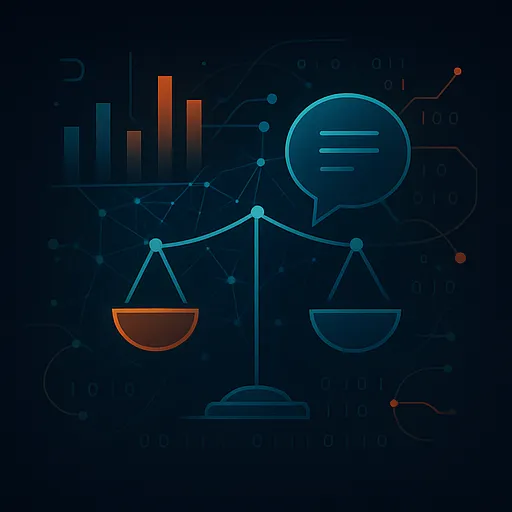
Conversational Analytics & Predictive Insights
Conversations generate rich data about user needs, preferences and behaviours. Conversational analytics extracts patterns from chat logs and voice transcripts to inform decisions. By computing metrics such as average response time, sentiment trend or user engagement, organisations can identify what works and what doesn’t. Predictive analytics goes further: using classification, regression and clustering, it models future outcomes. For example, a classifier might predict whether a customer will churn based on past interactions; a regression model could estimate future sales; clustering could segment users into cohorts with similar needs. These insights guide product design, marketing and staffing.
Several technologies enable these analyses. Natural language processing techniques like topic modelling and keyword extraction summarise conversations. Sentiment analysis quantifies emotion, while entity recognition identifies people and products discussed. Time‑series models analyse how engagement metrics evolve. Machine learning models are trained on labelled data to forecast satisfaction scores or escalation likelihood. Visualisation tools present the results through dashboards and heatmaps. By integrating these analyses with CRM and business intelligence systems, companies can act on the insights quickly. Real‑time analytics support adaptive experiences, adjusting conversation flows based on user sentiment.
Conversational analytics is widely used. Contact centres monitor agent performance and customer emotion to improve service quality. Product teams gather feedback from support chats to prioritise feature requests. Marketing departments track campaign effectiveness via chat interactions. Social platforms analyse group conversations to detect emerging topics or crises. Healthcare providers may analyse patient queries to identify trends in symptoms or concerns. In each context, analytics helps allocate resources, tailor content and anticipate demand. By combining quantitative metrics with qualitative insights, organisations gain a holistic view of their audience.
As with any data‑driven system, there are ethical considerations. Chat logs often contain sensitive personal information; anonymisation and secure storage are essential. Analysis should respect user consent and adhere to data protection laws. Models may inherit biases from historical data, leading to unfair predictions. It’s important to evaluate models across diverse user groups and update them regularly to prevent drift. Overreliance on automated insights can dehumanise interactions, so decisions should be contextualised with human judgement. When responsibly implemented, conversational analytics can improve experiences and outcomes for both users and organisations.
Back to articles